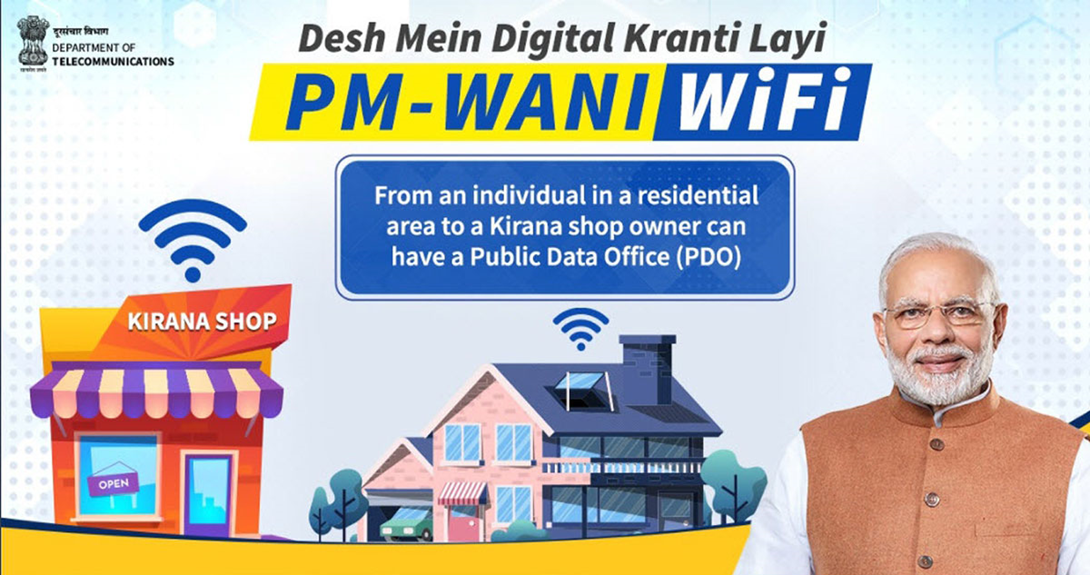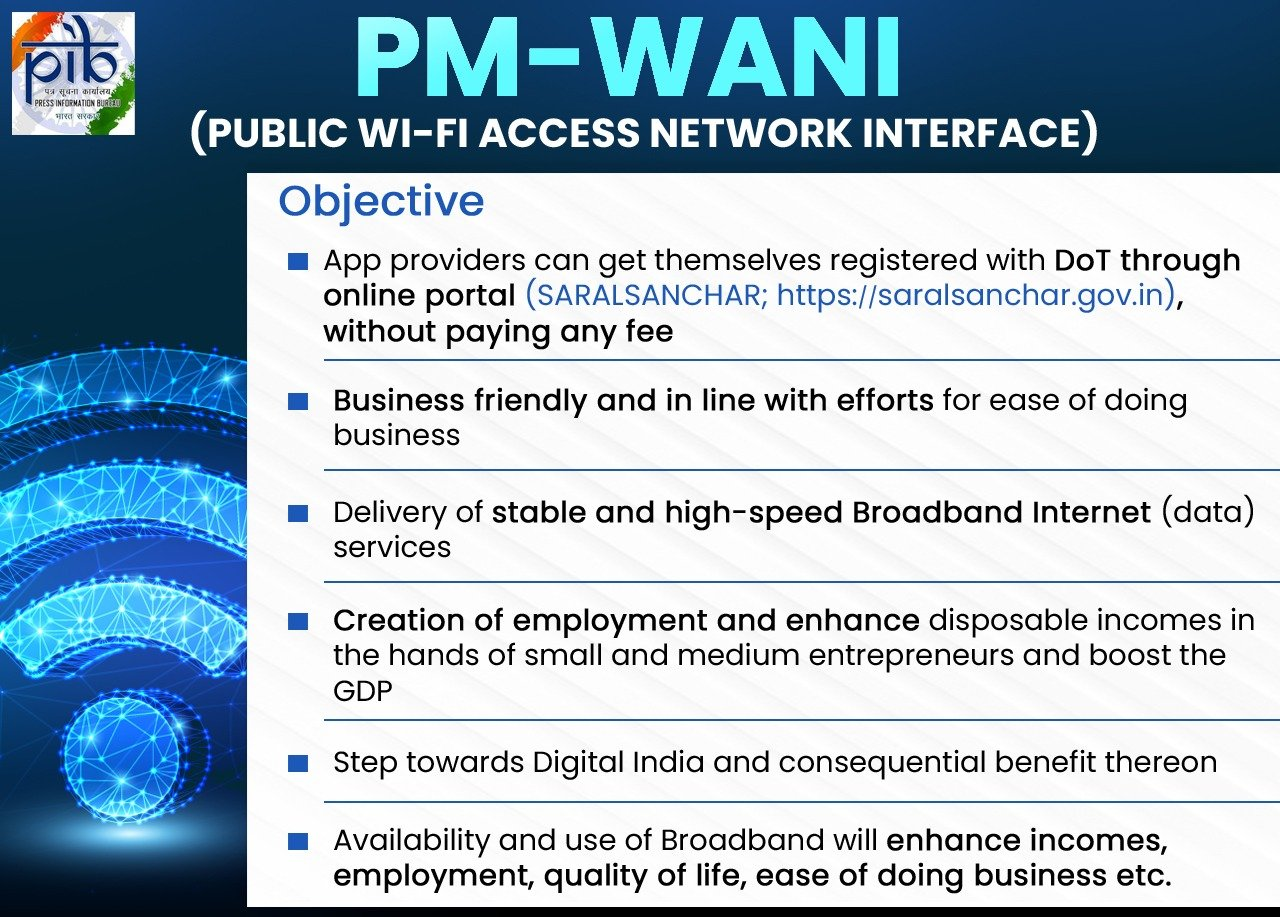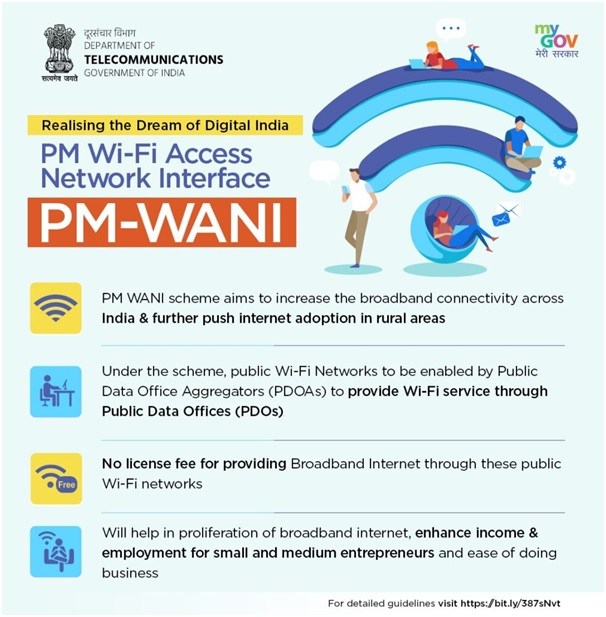Free Courses Sale ends Soon, Get It Now


Free Courses Sale ends Soon, Get It Now



Copyright infringement not intended
Picture Courtesy: https://reisnet.in/pmwani/
Context: The Prime Minister Wi-Fi Access Network Interface (PM-WANI) scheme is a government initiative aiming to provide public internet access across India.
PM-WANI Scheme
|
National Digital Communications Policy 2018 |
|
|
Objectives |
●Broadband for all ●Create four million jobs in the Digital Communications sector. ●Enhance the Digital Communications sector's contribution to 8% of India's GDP. ●Promote India to the Top 50 Nations in the ICT Development Index of ITU. ●Enhance India's contribution to Global Value Chains. ●Ensure Digital Sovereignty. |
|
Vision |
●Fulfill information and communication needs of citizens and enterprises. ●Support India's transition to a digitally empowered economy and society. |
|
Missions |
●Create robust Digital Communications Infrastructure. ●Enable Next Generation Technologies and Services. ●Ensure Sovereignty, Safety, and Security of Digital Communications. |
|
Features |
●Provide universal broadband connectivity at 50 Mbps to every citizen. ●Attract investments of USD 100 billion in the Digital Communications Sector. ●Providing training to one million manpower for building New Age Skill. ●Expand the Internet of Things (IoT) ecosystem to 5 billion connected devices. ●Establish a comprehensive data protection regime for digital communications. ●Facilitate India's effective participation in the global digital economy. |
|
Strategy |
●Establish a National Digital Grid. ●Establish Common Service Ducts and utility corridors in new city and highway road projects. ●Create a collaborative institutional mechanism for Common Rights of Way. ●Remove barriers to approvals. ●Facilitate the development of Open Access Next Generation Networks. |
Objectives of PM-WANI

Components of PM-WANI
The PM-WANI framework consists of several key players working together to deliver public Wi-Fi services:

Implementation Steps
Benefits of PM-WANI
Affordable Connectivity
Digital Inclusion
Empowerment of Citizens
|
PM-WANI offers a multifaceted approach to promoting affordability, digital inclusion, and citizen empowerment. By making internet access more accessible and affordable, the scheme provides the way for a more digitally connected and empowered India. |
Potential Challenges and Way Forward
Conclusion
Source:
|
PRACTICE QUESTION Q. Evaluate the scalability and sustainability of the PM-WANI model, considering factors such as the need for continuous investment in infrastructure upgrades, maintenance costs, and the potential for market saturation or disruptive technologies. Propose strategies to ensure the long-term viability of the PM-WANI initiative. |
© 2024 iasgyan. All right reserved